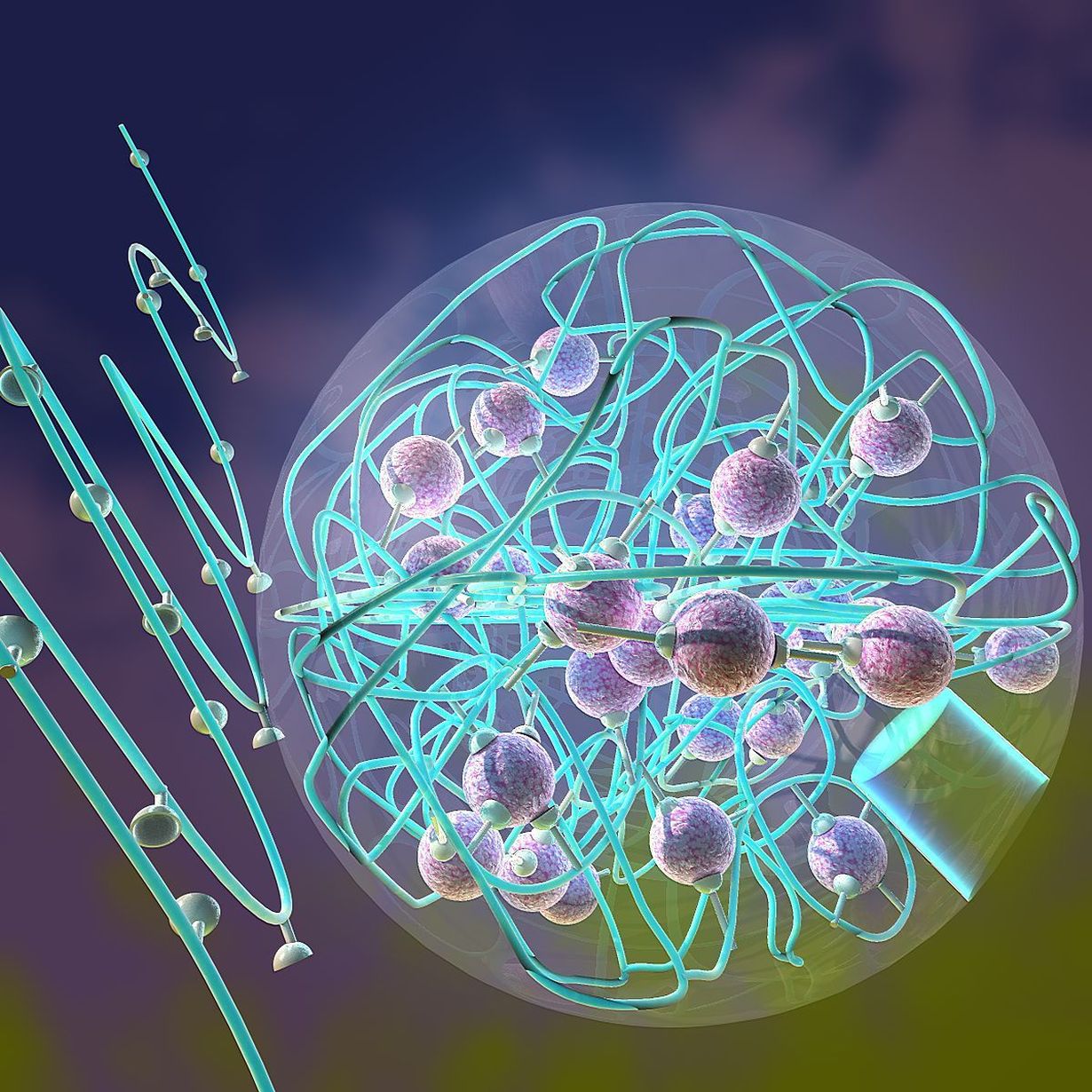Researchers of Karlsruhe Institute of Technology (KIT) have developed bioinspired minute reactors. As reported in the journal of the American Chemical Society (DOI: 10.1021/jacs.8b02135), research focuses on catalytically active single-chain nanoparticles mimicking the structure of metallo-enzymes. Production of such tailor-made macromolecules is one of the goals of the KIT-coordinated collaborative research center “Molecular Structuring of Soft Matter” (CRC 1176). The meeting of the CRC with the Division of “Macromolecular Chemistry” of the Gesellschaft Deutscher Chemiker (GDCh, Society of German Chemists) will take place from September 24 to 27 at KIT.
Catalysis, in the course of which a substance accelerates a chemical reaction, but remains unchanged, is of central importance to many industrial processes. To develop efficient catalysts optimized for various applications, researchers of different disciplines working in the Collaborative Research Center “Molecular Structuring of Soft Matter” (CRC 1176) of KIT were inspired by biological models. The chemists combined the structuring of natural enzymes with the design of synthetic macromolecules. As reported by the scientists in the Journal of the American Chemical Society, their work is inspired by the structure of metallo-enzymes, catalytically active proteins containing a metal. They specifically insert metal ions into a tailored-made polymer framework. The results are catalytically active single-chain nanoparticles. “In first studies, these new multi-functional nanoreactors reached very promising results as regards both catalyst characteristics and product formation,” say Professor Christopher Barner-Kowollik, Head of the Macromolecular Architectures Group of the Institute for Chemical Technology and Polymer Chemistry (ITCP), and Professor Peter Roesky, Head of the Chair for Inorganic Functional Materials of KIT’s Institute for Inorganic Chemistry (AOC).
Original publication: Hannah Rothfuss, Nicolai D. Knöfel, Peter W. Roesky, and Christopher Barner-Kowollik: Single-Chain Nanoparticles as Catalytic Nanoreactors. Journal of the American Chemical Society. 2018. DOI: 10.1021/jacs.8b02135. Abstract at: https://pubs.acs.org/doi/10.1021/jacs.8b02135.
The Collaborative Research Center “Molecular Structuring of Soft Matter”
The catalytically active single-chain nanoparticles have been developed by the KIT-coordinated collaborative research center “Molecular Structuring of Soft Matter” (CRC 1176) funded by the German Research Foundation (DFG) in close cooperation with Queensland University of Technology (QUT) in Brisbane/Australia. Within this collaborative research center, scientists are working on theoretical, analytical, and synthetic processes to specifically adjust the chain length or sequence of the building blocks of large molecules, for instance. The goal is the controlled structuring of soft matter on the molecular level in three dimensions in order to obtain macromolecules precisely designed for defined functions.
More information on CRC 1176: http://www.sfb1176.de.
Chemical Passwords and Molecular Tissues
Within CRC 1176, KIT researchers also found a way to reliably protect digitally transmitted sensitive information. They combined computer science and chemistry knowledge, i.e. a common encryption process and a chemical password. It represents a chemical compound with a certain sequence of building blocks and attached side chains. Letters and numbers are assigned to the chemical components.
More information: https://www.kit.edu/kit/pi_2018_044_agent-007-organische-molekule-als-geheimnistrager.php
Another highlight of CRC 1176 are two-dimensional fabrics made of monomolecular polymer threads. To produce these tissues of a single molecular layer in thickness, the researchers used surface-mounted metal-organic frameworks, called SURMOFs, as “looms.” The polymer threads are kept together by the chemical forces resulting from the weaving pattern, such that the molecular tissues are as flexible as conventional fabrics.
More information: https://www.kit.edu/kit/english/pi_2017_020_metal-organic-frameworks-used-as-looms.php
Conference “Dimensional Control of Polymer Materials – From Synthesis to Function”
The design of polymer materials made of precisely structured macromolecules will also be in the focus of the conference “Dimensional Control of Polymer Materials – From Synthesis to Function” that will take place from September 24 to 27, 2018, on KIT Campus South.
[…]
For the complete program, click www.gdch.de/makro2018
Weitere Materialien:
Detailed information about the KIT Materials Center: http://www.materials.kit.edu
In close partnership with society, KIT develops solutions for urgent challenges – from climate change, energy transition and sustainable use of natural resources to artificial intelligence, sovereignty and an aging population. As The University in the Helmholtz Association, KIT unites scientific excellence from insight to application-driven research under one roof – and is thus in a unique position to drive this transformation. As a University of Excellence, KIT offers its more than 10,000 employees and 22,800 students outstanding opportunities to shape a sustainable and resilient future. KIT – Science for Impact.

